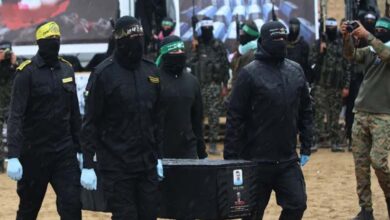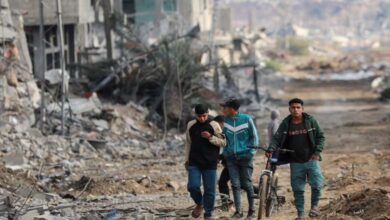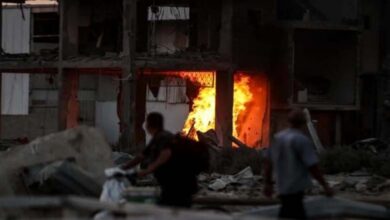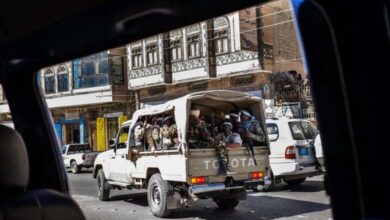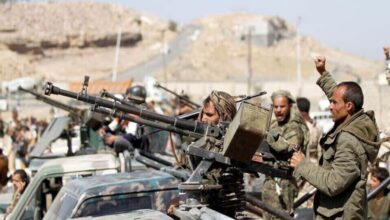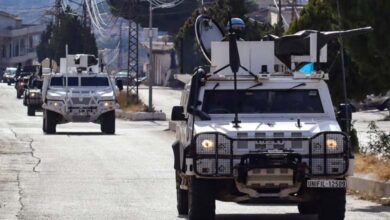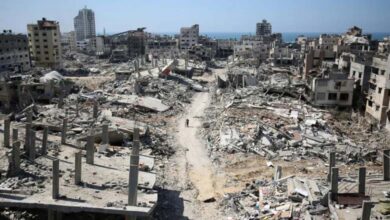Gaza Truce: ‘Obstacles’ Threaten the Second Phase
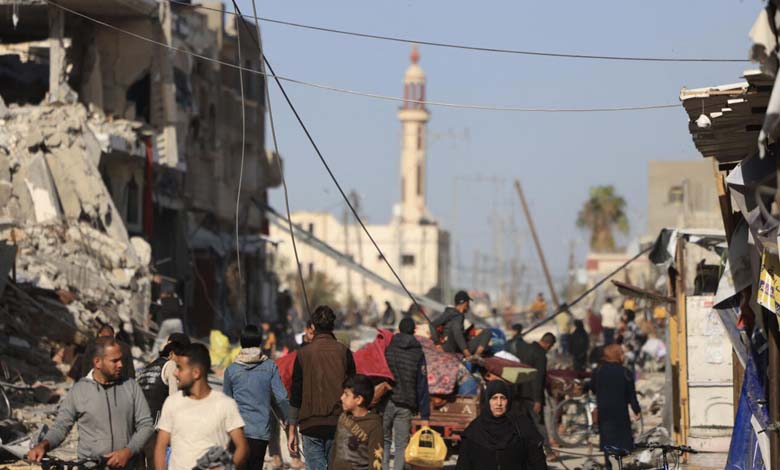
The first phase of the Gaza truce is set to end on Saturday, but an agreement on the second phase remains out of reach.
For six weeks, the ceasefire agreement has barely survived amid risky prisoner exchanges, disputes over alleged violations, and the shock of former U.S. President Donald Trump’s proposal to expel Palestinians from Gaza and take control of the territory.
-
The Second Phase of the Gaza Agreement: Three Objectives behind the Choice of the “Keeper of Secrets”
-
The Reason behind Netanyahu’s Refusal to Allow the Entry of ‘Caravans’ and Heavy Equipment into Gaza
Now, the fragile truce is entering a “more perilous” phase. As the first stage nears its conclusion, Israel, Hamas, the Trump administration, and Arab mediators appear far from reaching a deal to move forward with the crucial second phase, which is supposed to include the release of all remaining Israeli hostages, Israel’s withdrawal from Gaza, and a permanent end to the war, according to The Washington Post.
The key question now is whether Hamas can be convinced—or forced—to lay down its arms and leave Gaza, as Israeli Prime Minister Benjamin Netanyahu has demanded as a precondition for ending the war. Or will he be willing to make concessions and pay the political price?
-
After fishing… “Tunnel Messages” Precede the Release of an Israeli Hostage in Gaza
-
Trump’s Gaza Storm: Arab Initiative Seeks an Alternative to Halt Forced Displacement
Political Pressures
Analysts believe that Netanyahu and Hamas leaders are facing conflicting political pressures that make a second-phase agreement far more difficult than the first. They suggest that the resumption of war may only be a matter of time, according to The Washington Post.
For Netanyahu, who has long declared that the goal of the war is to “eradicate” Hamas, ending it without the group’s disarmament would anger his far-right government partner, Finance Minister Bezalel Smotrich, who has vowed to bring down the government if Netanyahu does not defeat Hamas both politically and militarily.
-
Gaza and Trump’s Ambitions… A “Fragile” Truce Struggling to Hold
-
Gaza War and October 7 Attack: Gallant Reveals New Secrets
In the coming weeks, Netanyahu will need Smotrich’s support more than ever to pass the budget before the March 31 deadline and avoid triggering elections.
For Hamas, giving up its weapons contradicts its declared mission of armed resistance against Israel until it withdraws from all occupied Palestinian territories. Recently, Hamas officials have expressed openness to sharing power with other Palestinian factions, but they insist on maintaining their military capabilities.
After The New York Times published an interview with senior Hamas leader Mousa Abu Marzouk, in which he expressed willingness to discuss disarmament, several other Hamas leaders quickly issued statements distancing themselves from his remarks.
Suhail al-Hindi, a member of Hamas‘ political bureau, told The Washington Post: “The resistance’s weapons are not open for discussion or negotiation; they are sacred and cannot be abandoned.”
-
The Joy of Return and the Pain of Separation: Mixed Emotions for Northern Gaza Residents
-
Gaza Ceasefire in Its Fourth Day: Doubts, Uncertainty, and Terrifying Gaps
Extension of the First Phase?
Despite his continued insistence on moving to the second phase of the truce, Trump’s special envoy, Steve Whitkoff, stated before his critical Middle East tour that the White House would seek to extend the first phase.
Some analysts believe that discussions about extending the first phase reflect diminishing hopes of reaching a second-phase agreement and ending the war.
-
Gaza Reconstruction Will Require Billions of Dollars
-
Back to the Ruins in Gaza: When Rubble Becomes a Homeland and Memories a Shelter
David Makovsky, a fellow at The Washington Institute for Near East Policy and a former advisor to the U.S. State Department on Israeli-Palestinian negotiations, stated: “The question is: how long can the extension last?”
He added: “Netanyahu believes that force is the only way to deal with Hamas, a stance reinforced by Smotrich’s political calculations, as he has said he would topple the government.” He continued: “If Netanyahu has to choose between the second phase or more war, I think he will fight.”
Resumption of Fighting?
Members of the far-right wing of the ruling coalition are publicly exerting influence. Days after the ceasefire agreement was approved, Smotrich stated that he had pressured Netanyahu to include large-scale military operations in the West Bank as part of Israel’s current war objectives.
Indeed, just two days after the Gaza ceasefire, the Israeli military launched its largest operation in the West Bank in years, deploying multiple infantry battalions to combat militants, conducting airstrikes, demolishing homes, and destroying infrastructure in densely populated refugee camps near cities such as Jenin, Tulkarm, and Tubas. This led to the displacement of 40,000 Palestinian civilians, according to humanitarian organizations.
-
The Day After the War: What the Palestinian Authority Wants in Gaza
-
Gaza Agreement Reaches the “Final Draft” Stage
Some Israeli security officials are resisting the idea of re-entering Gaza. They argue that after 15 months of bombardment, Israel cannot achieve any further military objectives.
However, the Israeli military has reportedly prepared plans to resume fighting with even greater intensity, particularly focusing on preventing Hamas from diverting humanitarian aid, according to current and former Israeli officials. These sources indicated that Defense Minister Israel Katz requested an assessment of this approach—something his predecessor, Yoav Gallant, had previously rejected on operational and legal grounds.
-
Some Progress in Gaza Negotiations without Reaching an Agreement
-
Gaza Ceasefire: “Slow” Steps Amidst Gaps and Obstacles
At the same time, both Netanyahu and Hamas are under pressure to end the war. Many Israelis have urged Netanyahu to move forward with the next phase and secure the release of all captives.
According to a poll conducted by the Israel Democracy Institute between January 28 and February 2, seven out of ten Israelis support transitioning to the second phase, freeing all remaining hostages, and ending the war.
-
“Death Trap” in Gaza: International Report Condemns Israel’s Actions
-
Gaza Welcomes 2025 with “Wasted Hope”: Talks of a “Deadlock” in Negotiations
In Gaza, Hamas has also faced growing frustration among Palestinians, as the ceasefire has not led to the promised improvements in living conditions or the start of reconstruction efforts, The Washington Post noted. The shortages of bulldozers, fuel, and tents persist.
The newspaper quoted Ibrahim Madhoun, a Gaza-based analyst close to Hamas, saying that the group is hesitant to resume the war. He explained: “The humanitarian situation in Gaza today is dire, with people enduring conditions beyond human tolerance. Every decision is made with extreme caution to preserve what remains of life and dignity.”
-
Will the Gaza War End in 2025?
-
In Jerusalem and Bethlehem… Gaza’s agony overshadows the joy of Christmas
Daniel Shapiro, a former senior official in the Biden administration and former U.S. ambassador to Israel, suggested that one positive effect of Trump’s shocking and “unserious” call for American control over Gaza was that it pushed Arab states to step up efforts to propose an alternative plan for rebuilding the region and installing a new leadership.
Shapiro added: “I don’t think Hamas yet feels compelled to give up its weapons and tunnels—but at some point, it will have to.”
-
Water Crisis in Gaza: Human Rights Watch Accuses Israel of Genocide
-
Details of the “Gaza Truce”: Disputes over “Prisoners” and Flexibility on the “Israeli Withdrawal”


